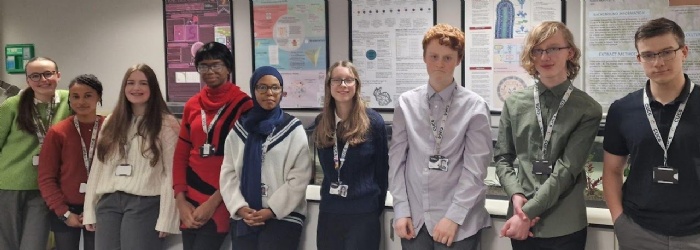Liverpool Life Sciences UTC – BRI Journal

A fascinating dive into the research carried out by students in the Baltic Research Institute at Liverpool Life Sciences UTC.
"A fascinating dive into the research carried out by students in the Baltic Research Institute at Liverpool Life Sciences UTC and the Studio School located in Liverpool’s Baltic Triangle.” – Baltic Research Institute Journal, Volume 3, Issue 2.
From red hot antimicrobial peppers to bird-inspired aircrafts, the spring edition of the Baltic Research Institute (BRI) Journal is an amalgamation of original research, delving deep into the microscopic realm of microbes, then soaring off into the macro-plane of the skies.
Being the only school in the country with its own student-led research institute and journal, the BRI is a reflection of Life Sciences UTC students taking matters into their own capable hands. The journal is the self-sustained space to share their scientific discoveries, written, edited and published by the students themselves.
Biomimicry opens the BRI Journal, with a look at – is it a bird? Is it a plane? Oh wait, it’s a plane inspired by the motion of birds! – biomimicry. UTC student Khaled Al Saqaf conducted original research into the development of planes, in which mankind utilises nature’s influence and adds a human touch. With a focus on peregrine falcons and albatrosses, Khaled explores aircraft prototype blueprints, aerodynamic wing design and conditions, like wind speed and direction, that affect flight.
Within the journal, you’ll also find an introduction to antimicrobial resistance (AMR), in which Life Sciences students study the antibiotic effect of natural resources and collaborate on original research, discussing the effect of red hot chilli peppers on AMR, analysing the antimicrobial potential of Syrian spices and further exploring the combination effect of antibiotic cocktails! It’s a smorgasbord of science.
One that was served up to visitors at the BioInfect 2025 Conference, back in early February. With a focus on antimicrobial resistance, the students’ original research was perfectly placed amongst a selection of other AMR pioneers who presented throughout the day.
“These different perspectives made us realise that collaboration from different groups is key to bringing light to AMR and helping the general public understand how they will be affected by it,” says BRI editor, Ava Knowles.
The spring edition also features a report on student-led research, delving into the awareness of antimicrobial resistance amongst young people, conducted and reported on by UTC student Fatima Mohamed, with the findings presented at the BioInfect conference.
Another renowned celebration of STEM science, British Science Week, took place from 7 to 16 March this year and it was only natural for Life Sciences UTC and the BRI to get involved. With the theme “Change and Adapt,” it was the perfect opportunity for students to continue the conversation on antimicrobial resistance, further exploring three categories; hand hygiene, bacterial resistance and antibiotic use. The AMR-focused science week was a huge success, as students received a surplus of great feedback and further motivation for the future.
This is only the beginning for antimicrobial resistance research, and our students are anything but resistant to find out more. The latest edition of the BRI Journal is a true testament to their talent.
Read More Student Research
Curious about how ancient Egyptians shaped modern medicine? Or the potential of the mealworm gut microbiome to break down non-recyclable plastics? Discover the fascinating potential of bacteriophage viruses in the fight against antimicrobial resistance, and an affordable bionic arm concept designed and developed by one of our students.
You can find previous editions here.
